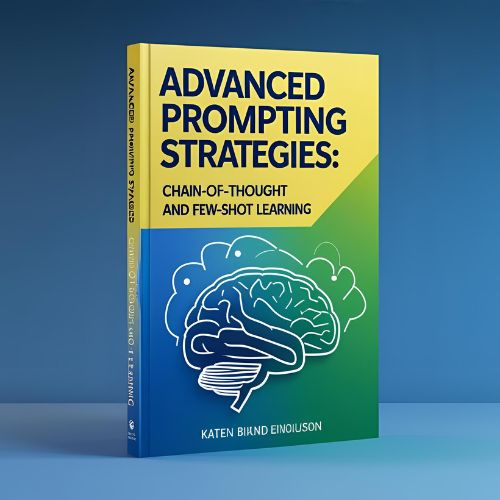The art of prompting AI models has evolved far beyond simple question-and-answer interactions. As large language models become more sophisticated, so too must our approaches to communicating with them. Two powerful techniques that have emerged as game-changers in the field are Chain-of-Thought (CoT) prompting and Few-Shot Learning. These strategies can dramatically improve the quality, accuracy, and reasoning capabilities of AI responses.
Understanding Chain-of-Thought Prompting
Chain-of-Thought prompting is a technique that encourages AI models to break down complex problems into step-by-step reasoning processes. Instead of jumping directly to an answer, the model is guided to show its work, much like a student solving a math problem on paper.
Why Chain-of-Thought Works
The power of CoT lies in its ability to mirror human problem-solving processes. When we tackle complex issues, we naturally break them down into smaller, manageable steps. By encouraging AI models to do the same, we tap into their capacity for logical reasoning and reduce the likelihood of errors that come from oversimplified responses.
Implementing Chain-of-Thought Prompting
The key to effective CoT prompting is explicit instruction. Instead of asking “What’s the solution to this problem?” you might say “Let’s work through this step by step. First, identify the key components, then analyze each one, and finally synthesize your findings.”
Example without CoT:
Prompt: Should our company invest in renewable energy?
Response: Yes, renewable energy is a good investment.
Example with CoT:
Prompt: Let's analyze whether our company should invest in renewable energy. Please consider: 1) Current energy costs, 2) Initial investment requirements, 3) Long-term savings, 4) Environmental impact, and 5) Market trends. Work through each factor step by step.
Response: Let me analyze this investment decision systematically:
1) Current energy costs: [detailed analysis]
2) Initial investment requirements: [cost breakdown]
3) Long-term savings: [projected ROI calculations]
4) Environmental impact: [sustainability considerations]
5) Market trends: [industry outlook]
Based on this step-by-step analysis...
Mastering Few-Shot Learning
Few-Shot Learning is a prompting technique where you provide the AI with a small number of examples to establish a pattern or format before asking it to perform a similar task. This approach leverages the model’s ability to recognize patterns and apply them to new situations.
The Psychology Behind Few-Shot Learning
Human learning often works through pattern recognition and example-based understanding. Few-Shot Learning applies this same principle to AI interactions. By showing the model what “good” looks like through concrete examples, you’re essentially training it in real-time for your specific task.
Crafting Effective Few-Shot Prompts
The quality of your examples is crucial. Each example should be representative of the desired output format, style, and level of detail. Typically, 2-5 examples are sufficient to establish a clear pattern without overwhelming the model.
Example of Few-Shot Learning for Email Classification:
Prompt: Classify the following emails as "Urgent," "Normal," or "Low Priority."
Examples:
Email: "Server is down, all services unavailable"
Classification: Urgent
Email: "Monthly report attached for your review"
Classification: Normal
Email: "Office supplies catalog for next quarter"
Classification: Low Priority
Now classify: "Client requesting immediate callback about contract cancellation"
Combining Chain-of-Thought and Few-Shot Learning
The real magic happens when you combine these two approaches. By providing examples that demonstrate step-by-step reasoning, you create a powerful framework that guides both the process and the format of the AI’s response.
Practical Applications
Business Analysis: Combine both techniques when asking for market analysis, financial projections, or strategic recommendations. Provide examples of well-structured analyses while requesting step-by-step reasoning.
Creative Writing: Use few-shot examples to establish tone and style, while employing CoT to guide the creative process through character development, plot structure, and thematic elements.
Technical Problem-Solving: Show examples of systematic troubleshooting approaches while asking the AI to work through problems methodically.
Best Practices for Advanced Prompting
Be Specific About Process
Don’t just ask for an answer; specify how you want the AI to arrive at that answer. Use phrases like “analyze step by step,” “consider each factor individually,” or “walk me through your reasoning.”
Quality Over Quantity in Examples
When using few-shot learning, focus on providing high-quality, representative examples rather than many mediocre ones. Each example should clearly demonstrate the desired output.
Iterate and Refine
Advanced prompting is often an iterative process. Start with a basic prompt, analyze the response, and refine your approach based on what works and what doesn’t.
Context is King
Provide sufficient context for both the problem and the desired solution format. The more clearly you can communicate your expectations, the better the AI can meet them.
Common Pitfalls to Avoid
Over-Constraining: While structure is helpful, being too rigid can stifle the AI’s creative problem-solving abilities.
Inconsistent Examples: In few-shot learning, ensure your examples are consistent in format and quality to avoid confusing the model.
Skipping the Setup: Don’t assume the AI understands your intent. Take time to properly set up the problem and expectations.
The Future of Prompting
As AI models continue to evolve, so will our prompting strategies. The techniques we use today are laying the groundwork for even more sophisticated interactions tomorrow. Chain-of-Thought and Few-Shot Learning represent just the beginning of a more nuanced, collaborative relationship between humans and AI.
Understanding and mastering these advanced prompting strategies isn’t just about getting better answers from AI models—it’s about developing a new form of digital literacy that will be essential in our increasingly AI-integrated world. The investment in learning these techniques today will pay dividends as AI becomes even more central to how we work, create, and solve problems.
By embracing Chain-of-Thought prompting and Few-Shot Learning, you’re not just improving your AI interactions; you’re participating in the evolution of human-AI collaboration. The future belongs to those who can effectively communicate with and guide artificial intelligence, and these advanced prompting strategies are your gateway to that future.


Leave a Reply